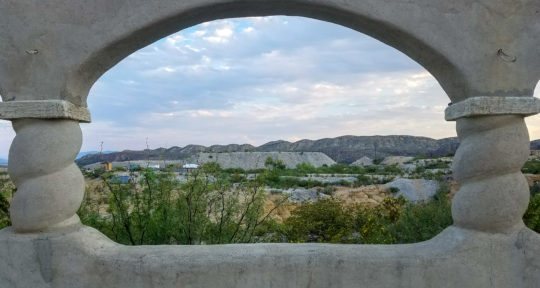It’s feeding time along the upper Niagara Gorge. Hawks hover high above Whirlpool State Park, swooping down into the brush, while yellow warblers search for bugs and insects in the abundant foliage. Gulls snack on assorted edibles along the shoreline, and the faint buzzing of bees can be heard in the overflowing greenery. Overhead, the sun shines through a sky sparsely covered by fluffy cumulus clouds, as microscopic droplets of mist from Niagara Falls collect on my arms and brow.
The shores of Niagara Falls, New York looked nothing like this 20 years ago, when I used to come through the city on family road trips from New Jersey to Toronto. Back then, I would stare out the car window at all the abandoned factories that lined the banks of the Niagara River, derelict reminders of the city’s turn-of-the-century heyday as an industrial and manufacturing mecca. Niagara Falls was eroding, both economically and environmentally, at near epidemic levels—and at the center of it all was Robert Moses.
Robert Moses was not entirely an evil villain. In fact, he was the “master builder” of New York, the urban planner behind the city of Niagara Falls, and the namesake of the eponymous State Parkway that cuts north to south along the river and the city’s western edge. Moses was considered a hero and genius by some, but his antiquated 20th-century vision was unable to withstand globalization, deindustrialization, and the corresponding unemployment that sent the city into an economic tailspin.
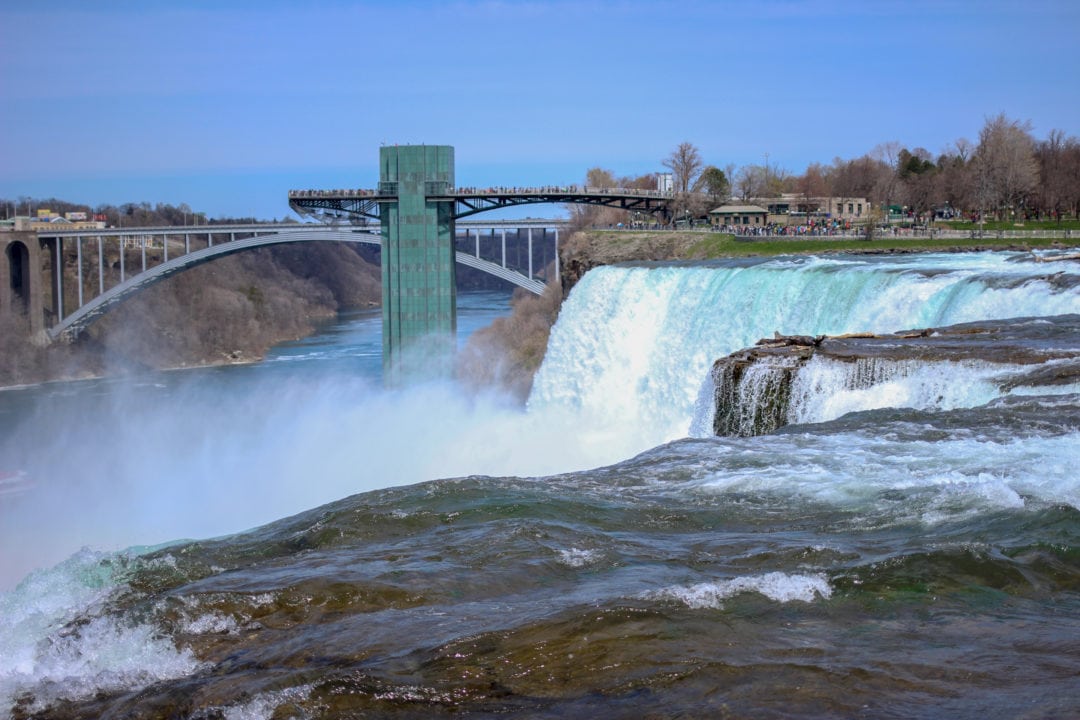
Now, Niagara Falls is ripping the ghost of Robert Moses from the very foundations of the community in order to establish a new identity, where ecotourism is replacing manufacturing, bridging the gap and unnatural separation between a magnificent world wonder and a badly decaying urban center.
“Niagara Falls was always a city that relied more heavily upon its industrial heritage than its tourism assets. It was really around [2001] that the city viewed tourism as a potential viable economic sector,” says Anthony Vilardo, the president of the USA Niagara Corporation, which is responsible for overseeing the redevelopment of the city of Niagara Falls. Currently, parts of the Robert Moses Parkway are being removed to reconnect the city to its waterfront. “We’ve proven that once we could provide accessibility to the water, the people will follow,” Vilardo says.
A unique ecosystem
With the removal of the Robert Moses State Parkway in full effect and the long term plan to revitalize Niagara Falls underway, I wanted to revisit a city and landmark that was always considered a rundown, steel-toed version of its kitschy and flagrant Canadian counterpart. Recalling the days when my family would load up the station wagon for the 500-mile trek north, I made a detour to see exactly how this once vibrant factory town could shake its reputation as a dilapidated relic.
Crossing the Rainbow Bridge and the border from Canada, it’s a stark contrast between the two sides of the falls. To the north, a well-developed cityscape of hotels and casinos overlooks this natural wonder, while the American banks are devoid of any major visible commercial real estate. Actually, if first impressions are as important as we’re led to believe, my first adult encounter with Niagara Falls, New York is underwhelming to say the least. However, I drive a few miles north—past the foreclosure signs, the boarded up windows, and the empty storefronts—and I’m thrust into an idyllic verdant ecosystem. On this day, Whirlpool State Park is in full bloom.
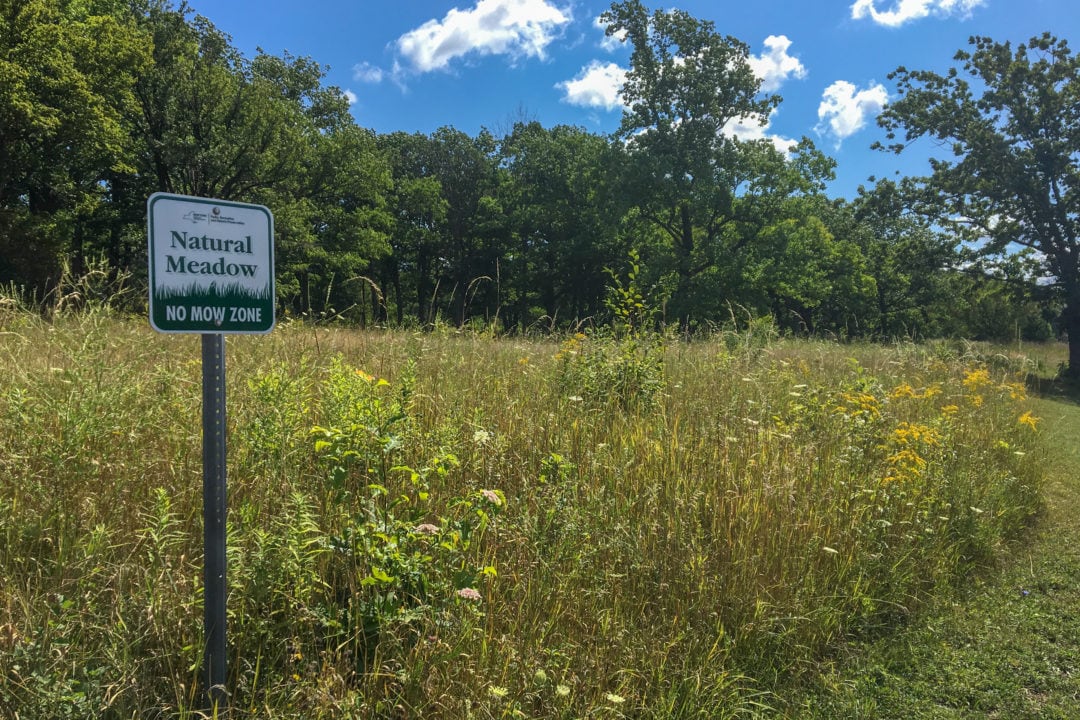
Nature and ecotourism are not necessarily the first things that come to mind when thinking about Niagara Falls, New York, but an outbreak of predatory species that hit the local ecosystem didn’t help Niagara’s environmental reputation. With Norway maple, buckthorns, Bohemian Knotweed, and ailanthus altissima (known as the “tree of heaven,” but referred to locally as the “tree of hell”) all running rampant through the parks of Niagara Falls, the Western New York Land Conservancy (WNYLC) finally stepped in to take major action and restore order to the ecosystem.
Beginning with Whirlpool and nearby Devil’s Hole State Park, environmental scientists and ecologists are “controlling those invasive species and allowing the native species, the species that were historically there in greater numbers, to return,” as Graham Tuttle, a Conservation Project Manager with the WNYLC and native of nearby Rochester, explains.
“Ecologically, the Niagara Gorge is a really important area,” Tuttle says. In addition to being a stopping point for migratory birds, over 1200 species of plants have been documented in the gorge. “Many of those are really unique to that area within New York state, so that’s the only place in New York state where these species are found,” Tuttle says. “That also then provides a lot of biodiversity of the food web—the plants provide a habitat for insects and other wildlife.”
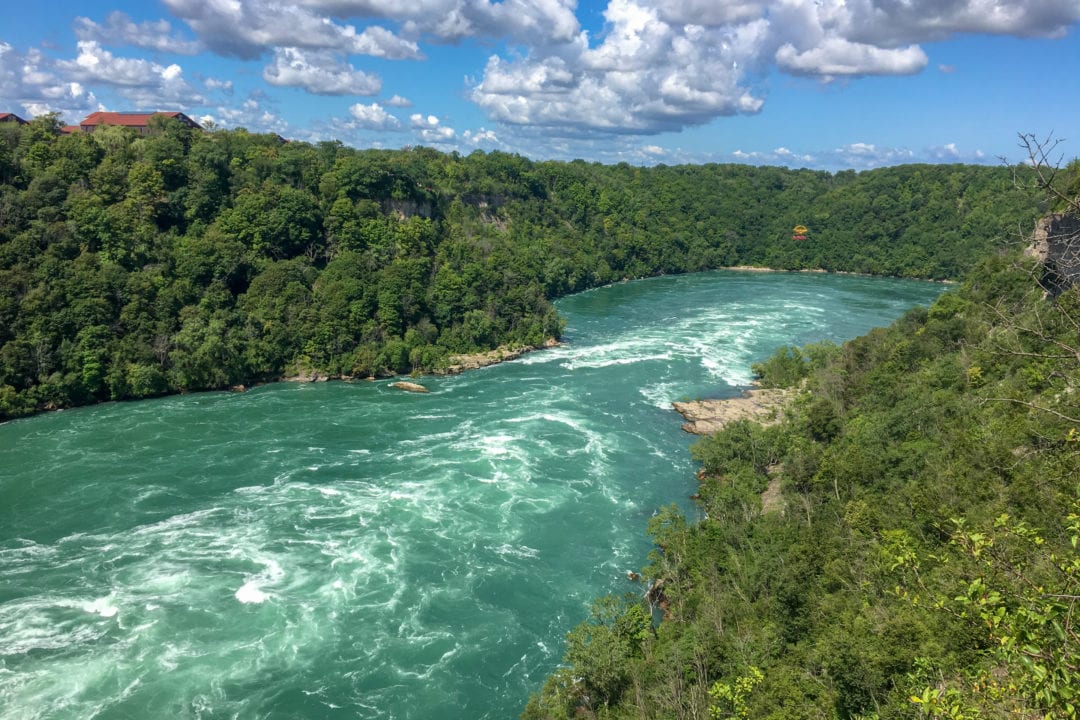
As I hike the trails of Whirlpool State Park, I listen to the rushing river and inhale the aromatic blend of mist and maple. This is exactly the type of experience that can change perceptions, which is what the folks at USA Niagara and the Western New York Land Conservancy are hoping to achieve with their various public works projects.
Local businesses
After a casual stroll back through Whirlpool State Park, it’s on to downtown Niagara Falls to check out some of the newer developments along Third Street.
A city block between Ferry Avenue and Niagara Street, this strip of Third Street, with its restaurants and markets, is an indicator of the type of local, grassroots movement that needs to catch on in order for Niagara Falls to really feel the larger effects of a lasting revitalization. It’s a cute and quaint street that can eventually become a major thoroughfare for tourists and conference visitors, but this is a project years in the making—and it’s unclear if these mom-and-pop businesses have the staying power to weather the early and turbulent startup years.
For today, at least, the in-house cured pastrami Rueben at the Power City Eatery, with its freshly baked bread, passes any New Yorker’s test. While Power City and its Third Street cohorts represent Niagara’s new movement toward modernization and rebuilding the local infrastructure, there are still a number of historically viable businesses, like the Twist O’ the Mist ice cream shop, that have withstood the famine of a seemingly endless economic drought.
-
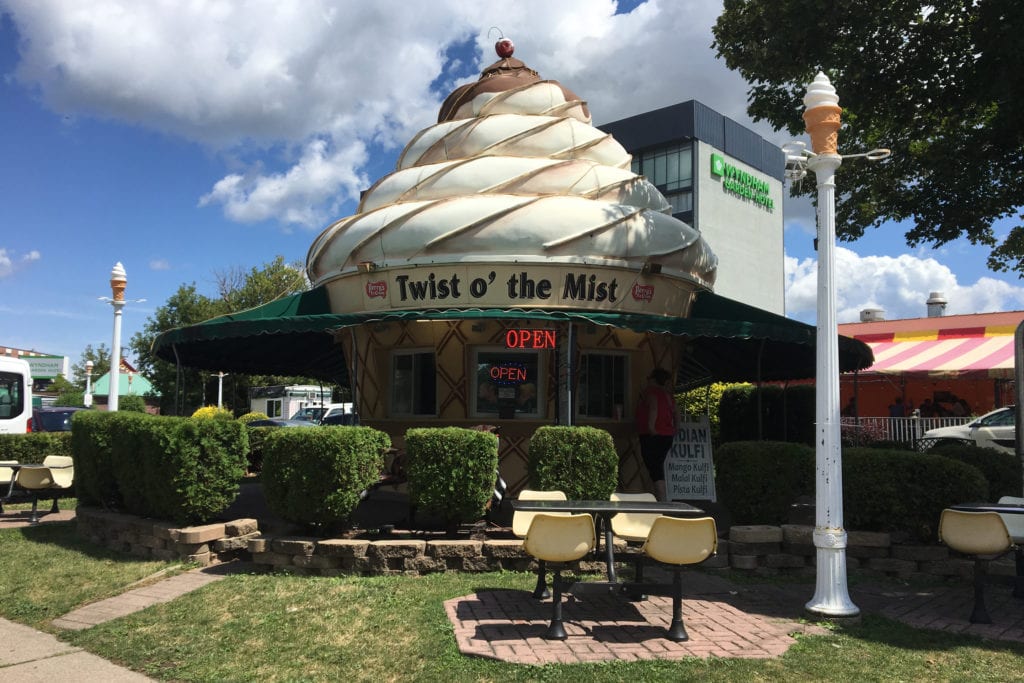
The Twist o’ the Mist is still open. | Photo: Dan Shapiro -
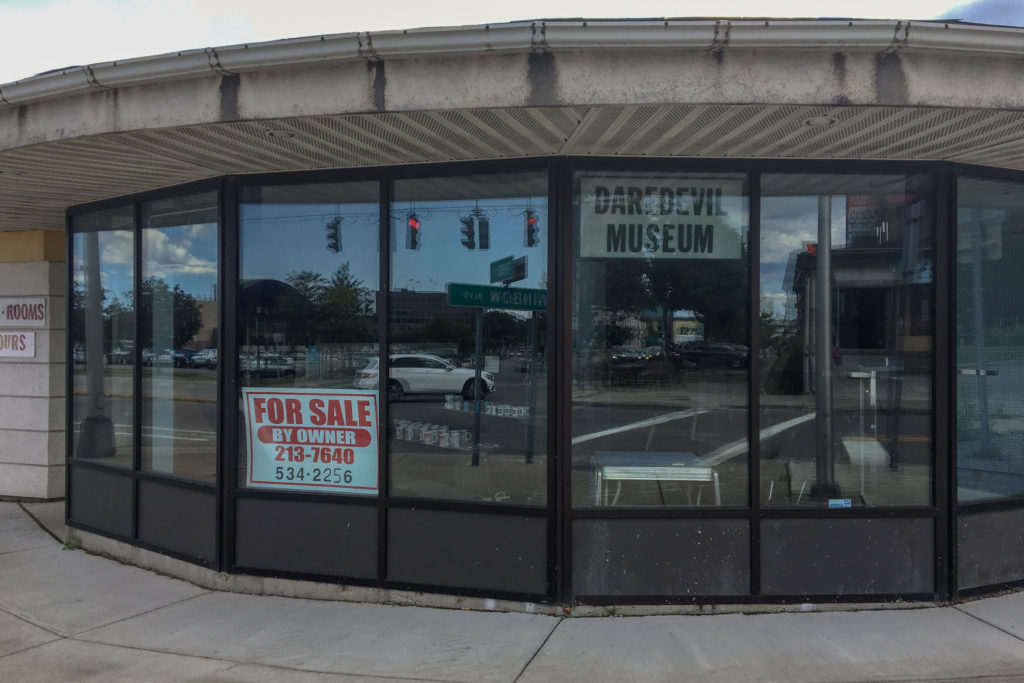
The daredevil museum is closed. | Photo: Dan Shapiro
Purchased by Sukhdeep Singh over a decade ago, the Twist O’ the Mist, an iconic ice cream stand shaped like a soft serve cone with a swirl up top, sits on a major lot along Niagara Street, close to the border. Driving past, it’s virtually impossible to miss, but despite the great location, Twist O’the Mist and Singh are still waiting to see any major economic spike following the early redevelopment efforts.
“There’s more people [visiting] than it used to be, but the state park is so large that it actually hurts us,”says Singh, sitting on the patio of Punjabi Hut, an Indian Restaurant he owns on an adjacent lot. “In the early ‘90s, there were crowds and crowds, but now they just stay in the park … there’s not much to do [downtown].”
Fortunately for Singh, his businesses have continued to flourish, in large part due to the number of Indian tourists that travel to Niagara Falls, along with the locals that frequents Punjabi Hut. However, the Twist O’the Mist remains outside the confines of the revitalization of Niagara Falls.
Six million cubic feet of water
With more than 400 acres of lush greenery and well-manicured roads and pathways, the Niagara Falls State Park is the epicenter of all activity in Niagara Falls, New York. This is because the park is home to the actual waterfalls, the city’s crown jewel and world wonder. And the falls—more specifically the Horseshoe Falls that wrap around the river, connecting the U.S. to Canada—do not disappoint.
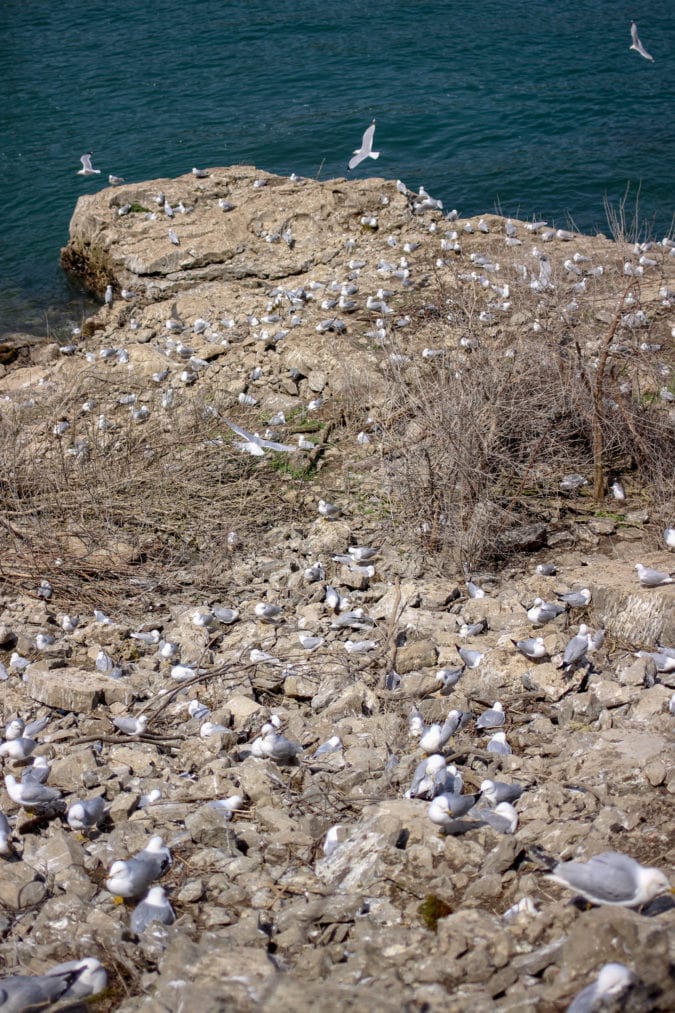
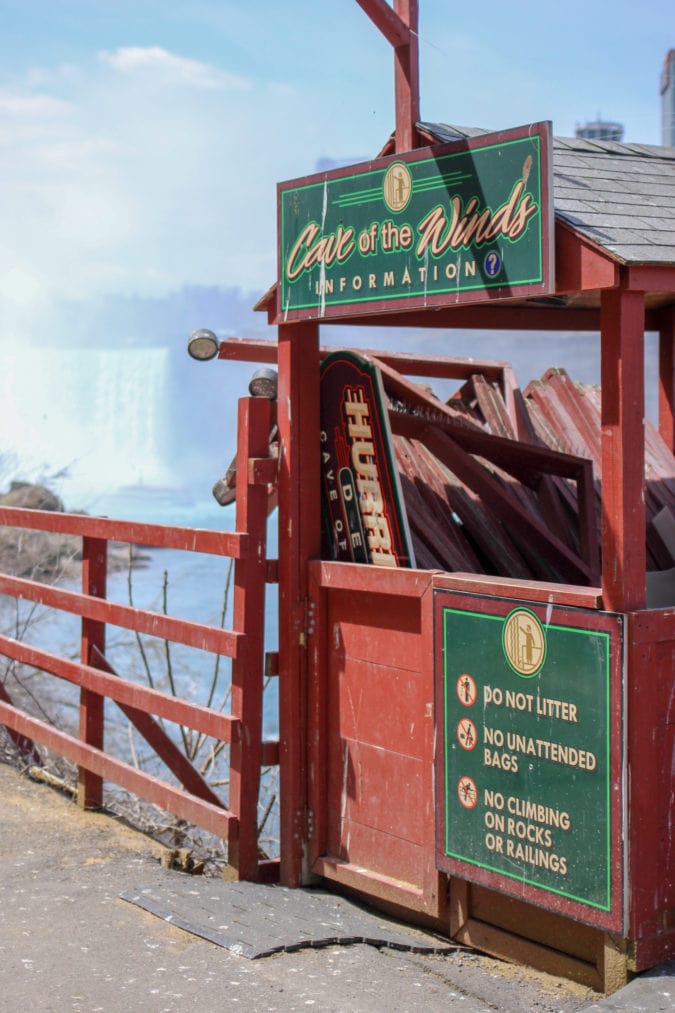
There are a number of major attractions in Niagara Falls State Park, like the Maid of the Mist boat tour and the Observation Tower near the Bridal Veil Falls. There’s also the Cave of the Winds, which consists of a series of staircases that lead all the way down to the surface level of the American Falls, as well as an aquarium. Basically every attraction is completely packed, which is, just as Singh described, in stark contrast to the desolate streets of the urban center.
Listed alongside places like Mount Everest and the Great Barrier Reef, Niagara Falls is both massive and impressive. Parking my car not far from the Top of the Falls restaurant, I forego the visitor center and head directly to the observation deck to take a closer look, and to hear the powerful rush and feel the mist.
Sure, it’s just some water crashing down into some more water. But more accurately, it’s six million cubic feet of water, spanning 2,600 feet in width, flowing over the falls every minute, creating 2,500 tons of force over the 160-foot drop. Those are some jaw-dropping statistics, and standing atop the Horseshoe Falls, I’m overcome with excitement and awe, not to mention covered in mist. It takes me right back to those family road trips 30 years ago, when I would stare at the falls and wonder what it must be like to do a barrel roll all the way down.
-
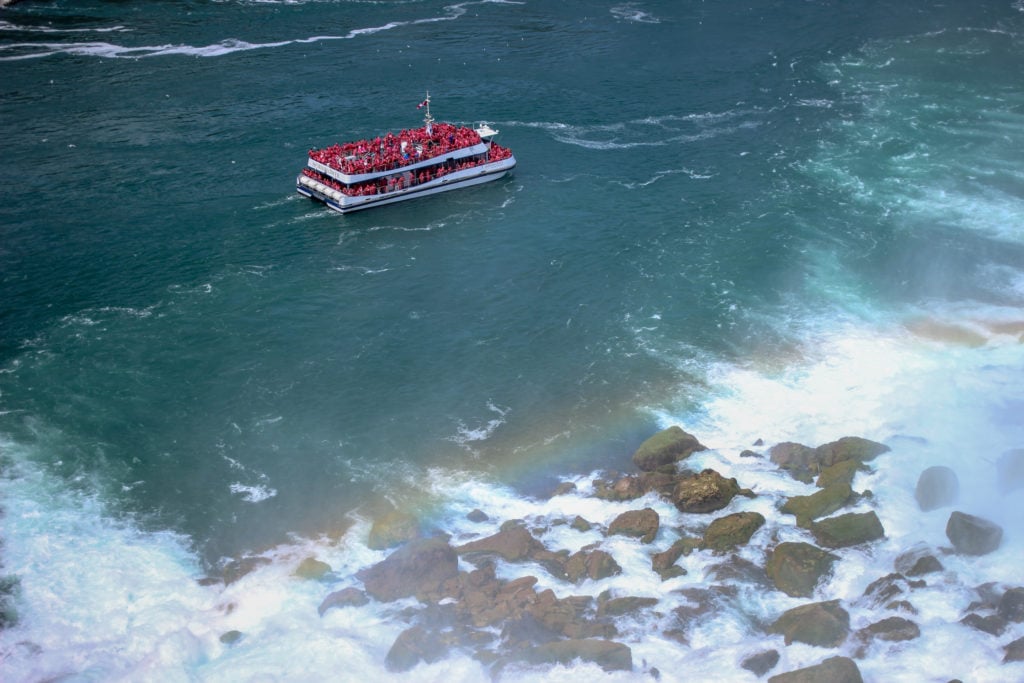
A view of the Maid of the Mist. | Photo: Alexandra Charitan -
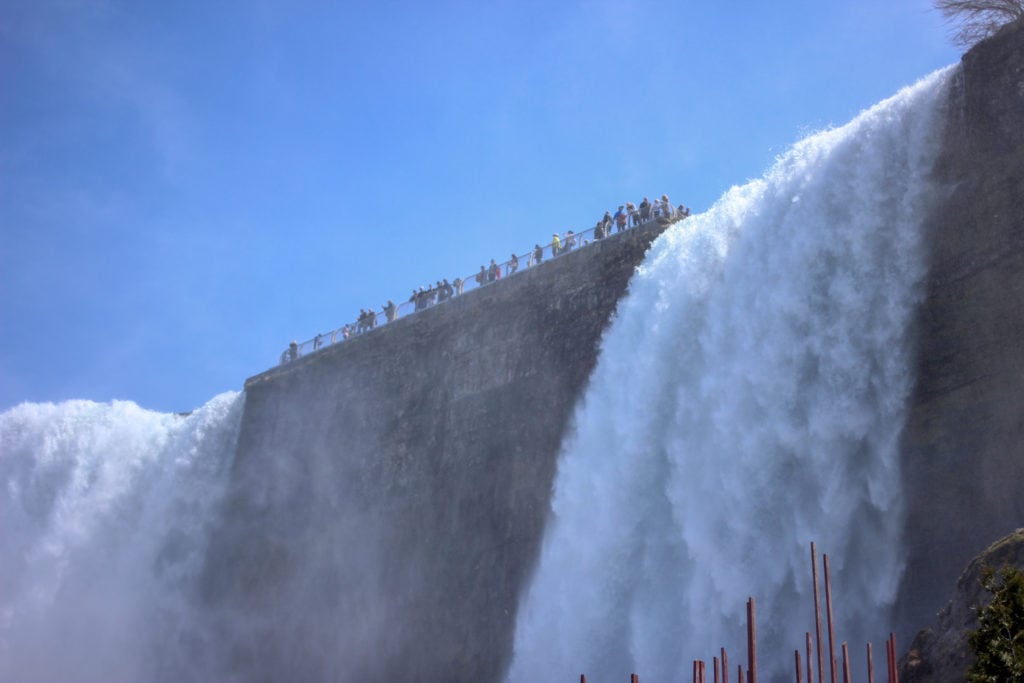
The American falls. | Photo: Alexandra Charitan -
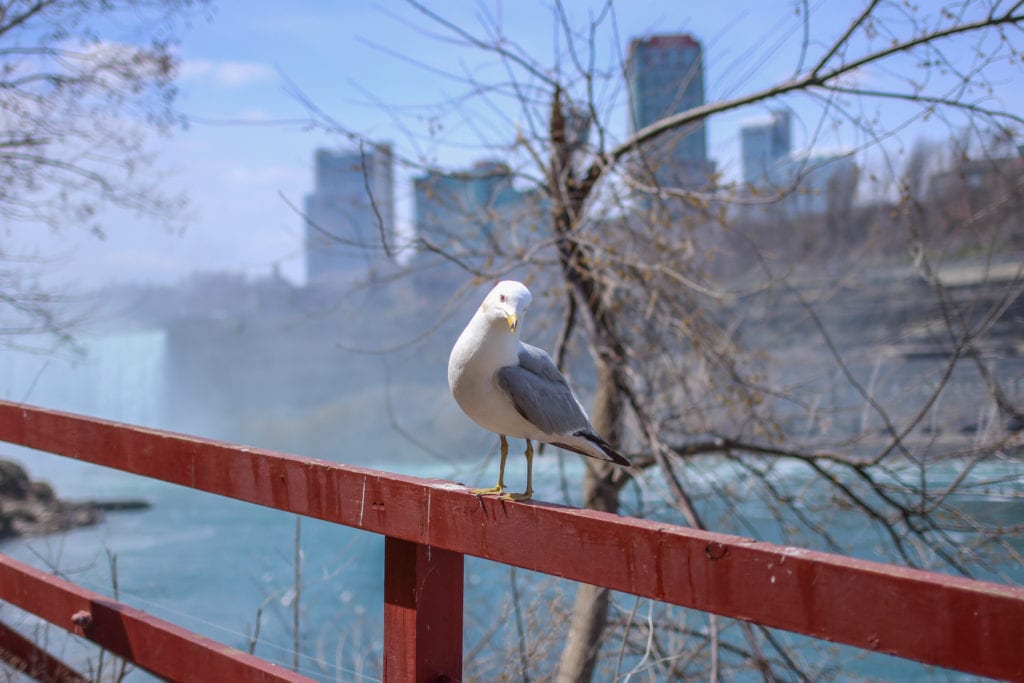
A seagull hangs out on the American side. | Photo: Alexandra Charitan
Witnessing the Horseshoe Falls just hours after my stroll through Whirlpool State Park and jaunt around town, it’s clear that the city of Niagara Falls has its work cut out for it, but there are already signs that life is returning to the Cataract City.
With the Robert Moses State Parkway already uprooted in the southern end of town, it’s clear that the public works project is bringing people closer to nature, closer to the falls, and closer to the heritage of the city. Through its focus on both the economy and the environment, Niagara Falls is in the midst of a major revitalization, which should make visitors and locals very happy—everyone except, perhaps, Robert Moses. He’ll have to sit this one out.


